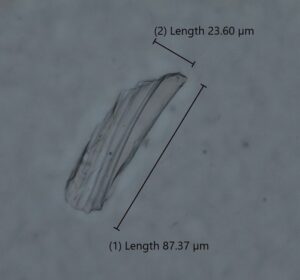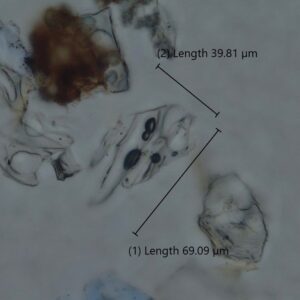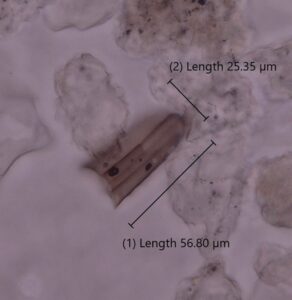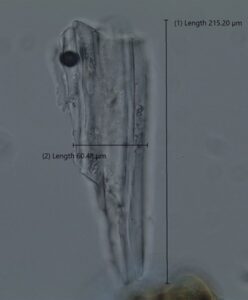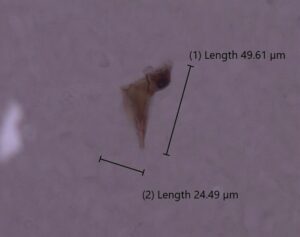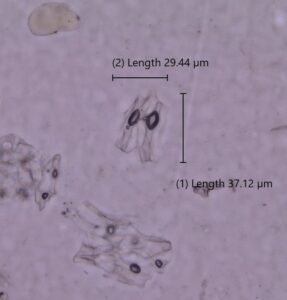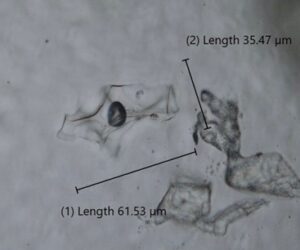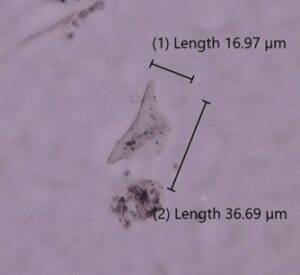Author: Ellie Shevlin, MSci Microbiology with Professional Studies, Queen’s University Belfast
Project: Morphological analysis of volcanic glass as a method of reconstructing eruption processes
Supervisor: Gill Plunkett, School of Natural & Built Environment, Queen’s University Belfast
My name is Ellie Shevlin, and I am currently a student on the MSci Microbiology with Professional Studies degree pathway at Queen’s University Belfast (QUB). The summer following the second year of my degree, I was extremely fortunate to land a seven-week summer research experience placement with QUADRAT, the title of which was: “Morphological analysis of volcanic glass as a method of reconstructing eruption processes”. This was facilitated by the School of Geography, Archaeology and Palaeoecology at QUB, where my project supervisor was Dr. Gill Plunkett. As soon as I had discovered the QUADRAT projects, I leapt at the chance to apply as I was keen to pursue an opportunity to gain more practical skills and experience. After having missed out on a lot of practical work during the first year of my degree, this was a prospect that I valued greatly.
Effectively, my project centred around examining slides from the QUB tephra collection to note the morphology (colour, shape, vesicular qualities, size) of the volcanic glass to try to establish a potential correlation between the morphology of tephra shards and the processes of the eruptions from which they originated. I used the light microscope to examine each slide and, through imaging software which allowed shard sizes to be recorded, built up a library of tephra micrographs. Getting used to identifying tephra on each slide amongst a sea of minerals was somewhat of a challenge: training your eye to pick out sometimes the tiniest fragments of glass, and establishing what tephra ‘should’ look like, proved a feat – but one that was worth it. This was greatly helped by using a polariser as I learned that under it, tephra should remain colourless or brown whilst minerals shift in colour! In the end, it felt so rewarding to become accustomed to picking out the smallest of tephra, and examining each slide increasingly became a faster and more efficient process. Another aspect of my REP involved a deep-dive into available literature to research these past eruptive events, their dynamics, and their volcanic sources, the majority of which were Icelandic and Alaskan. However, there were also a few slides containing tephra thought to originate from volcanic sources in Mexico, Italy, and Russia, to name a few.
In building up a portfolio of tephra images, the hopes of this project were to construct a sort of ‘image bank’ for which future students, academics, and other curious individuals can benefit from by allowing others to better learn how to identify tephra under the microscope. Hopefully, the results of this project may also demonstrate potential to infer eruption processes through examining the morphology of tephra shards. The experience I gained from my project has proved invaluable, as this has granted me a new sense of confidence in my practical and research abilities for heading into the placement year of my degree. As well as this, the prospect of pursuing a PhD in the future now appeals to me more than ever – perhaps even in a field different to that of my degree pathway, given the value I have witnessed in cross-disciplinarity and the transferable skills I have developed from my placement.
I would like to thank Gill, the rest of the faculty at the School of Geography, Archaeology and Palaeoecology at Queen’s University Belfast, and QUADRAT for granting me the opportunity to fulfil my research experience placement. Not only was this an invaluable insight into work in research, but my summer was also made so enjoyable and memorable thanks to all of the support I received through undertaking this project. Thank you so much!
Below are micrographs taken of some of my favourite shards: in order from left to right, the first five are thought to come from Icelandic eruptions (three from Hekla, followed by Öræfajökull, and the Veiðivötn-Bárðarbunga system). The last three are thought to originate from: Churchill (Alaska), Shiveluch (Russia), and a volcanic source on the Kuril Islands.

